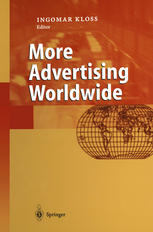

Most ebook files are in PDF format, so you can easily read them using various software such as Foxit Reader or directly on the Google Chrome browser.
Some ebook files are released by publishers in other formats such as .awz, .mobi, .epub, .fb2, etc. You may need to install specific software to read these formats on mobile/PC, such as Calibre.
Please read the tutorial at this link: https://ebookbell.com/faq
We offer FREE conversion to the popular formats you request; however, this may take some time. Therefore, right after payment, please email us, and we will try to provide the service as quickly as possible.
For some exceptional file formats or broken links (if any), please refrain from opening any disputes. Instead, email us first, and we will try to assist within a maximum of 6 hours.
EbookBell Team

4.1
70 reviewsThe first volume of this reader was on the subject of advertising conditions in Australia, Belgium, Finland, France, Germany, India, Japan, Russia, South Africa, Taiwan and the USA. Not forgetting Marieke de Mooij's chapter on the impact of culture on advertising. With this second volume the title "Advertising Worldwide" becomes a little bit more true. Again other important countries are investigated with respect to their specific advertising structures. The authors of the different countries had the same briefing as in the first volume: • What are the social, cultural or religious features of advertising and advertising practices? • Are there any taboos? • Which legal restrictions apply? • What kind of advertising infrastructure is there? Are there any institu tions, federations or boards of advertising? • Which media are readily available? • How are media data collected? What are the methods of gaining adver tising data? • How can specific target groups be addressed? • Are there any particular preferences concerning the use of media? Assessing the choice of countries in the two volumes of "Advertising Wordwide" one has to conc1ude as a first resume that it is not primarily the more theoretical question of standardization or differentiation which dominates the advertising strategy (at least for consumer goods) but the very practical necessity of adapting to the respective specific advertising conditions of each country. A standardized global, even multinational ad vertising campaign has to be considered the exception, rather than the rule.